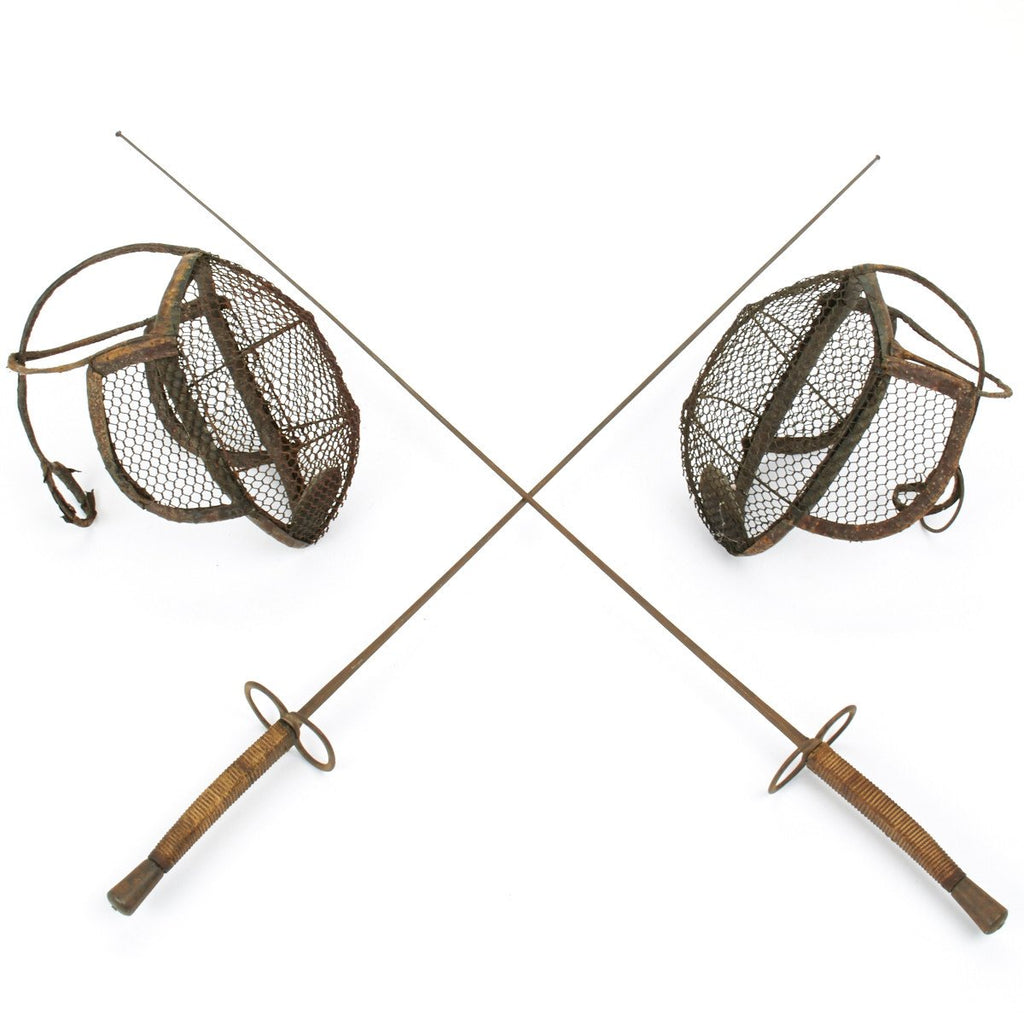Item Description
Original Items: Only One Set Available. Remember in the film AN IDEAL HUSBAND? This is exactly what was used in that London fencing scene. Dueling with swords in the modern world is now known as "fencing".
This old set turned up at our door in the arms of a charming young lady, having just been found in her attic. The set consist of a pair of Victorian épée with button tips to the blades to avoid running your opponent through and a pair of the head masks that are essentially wire mesh helmets allowing all around vision but again with a gauge so small as to not allow penetration by an épée.
While modern sport fencing has three weapons (foil, épée, and sabre), each a separate event, épée is the only one in which the entire body is the valid target area. Épée is the heaviest of the three modern fencing weapons. Fencing matches with the épée require a large amount of contingent, accuracy and speed. Since the entire body is a target, a successful épée fencer must be able to anticipate their opponent's moves and strike their opponent at the correct time.
The French word épée ultimately derives from Latin spatha. The term épée was introduced into English in the 1880s for the sportive fencing weapon.
Like the foil (fleuret), the épée evolved from light civilian weapons such as the smallsword, which since the late 17th century had been the most commonly used dueling sword, replacing the rapier.
The dueling sword developed in the 19th century when, under pressure from the authorities, duels were more frequently fought until "first blood" (as indicated by the French to English translation) only, instead of to the death. Under this provision, it became sufficient to inflict a minor nick on the wrist or other exposed area on the opponent in order to win the duel. This resulted in emphasis on light touches to the arm and hand, while downplaying hits to the torso.[clarification needed] Rapiers with full cup-guards had been made since the mid 17th century, but were not widespread before the 19th century.
Today, épée fencing very much resembles 19th century dueling. An épée fencer must hit the target with the tip of the weapon. A difference between épée and foil versus sabre is that a corps-à-corps or "body-to-body" contact between fencers is not necessarily an offense, unless it is done with "brutality or violence".
In the pre-electric era, épéeists used a point d'arrêt ("stopping point"), a three-pronged point with small protruding spikes, which would snag on the opponent's clothing or mask, helping the referee to see the hits. The spikes caused épée fencing to be a notoriously painful affair, and épéeists could be easily recognized by the tears in their jacket sleeves.
Perfect for Decoration in your man's cave, already an antique and ready to display.
- This product is available for international shipping.
- Eligible for all payments - Visa, Mastercard, Discover, AMEX, Paypal & Sezzle























